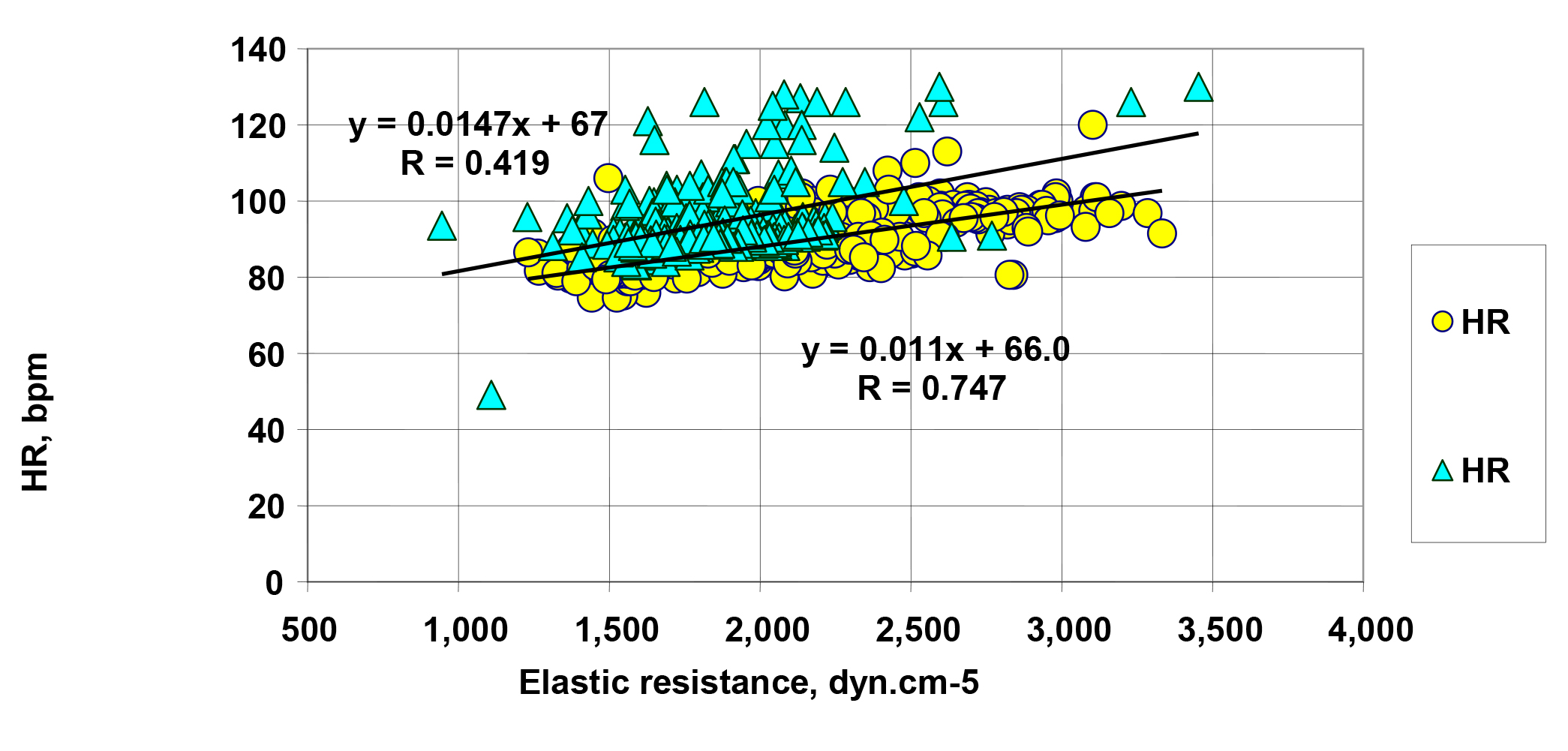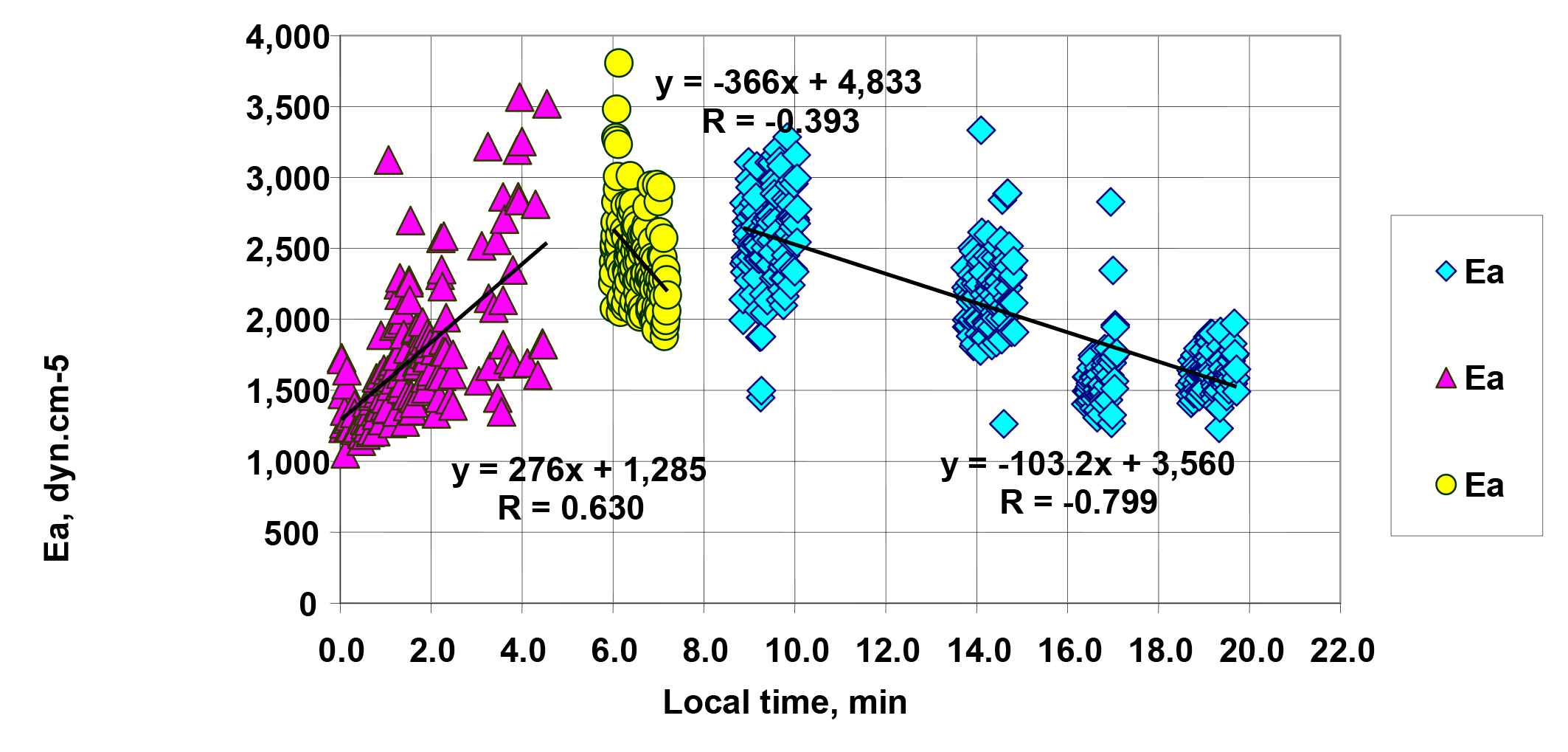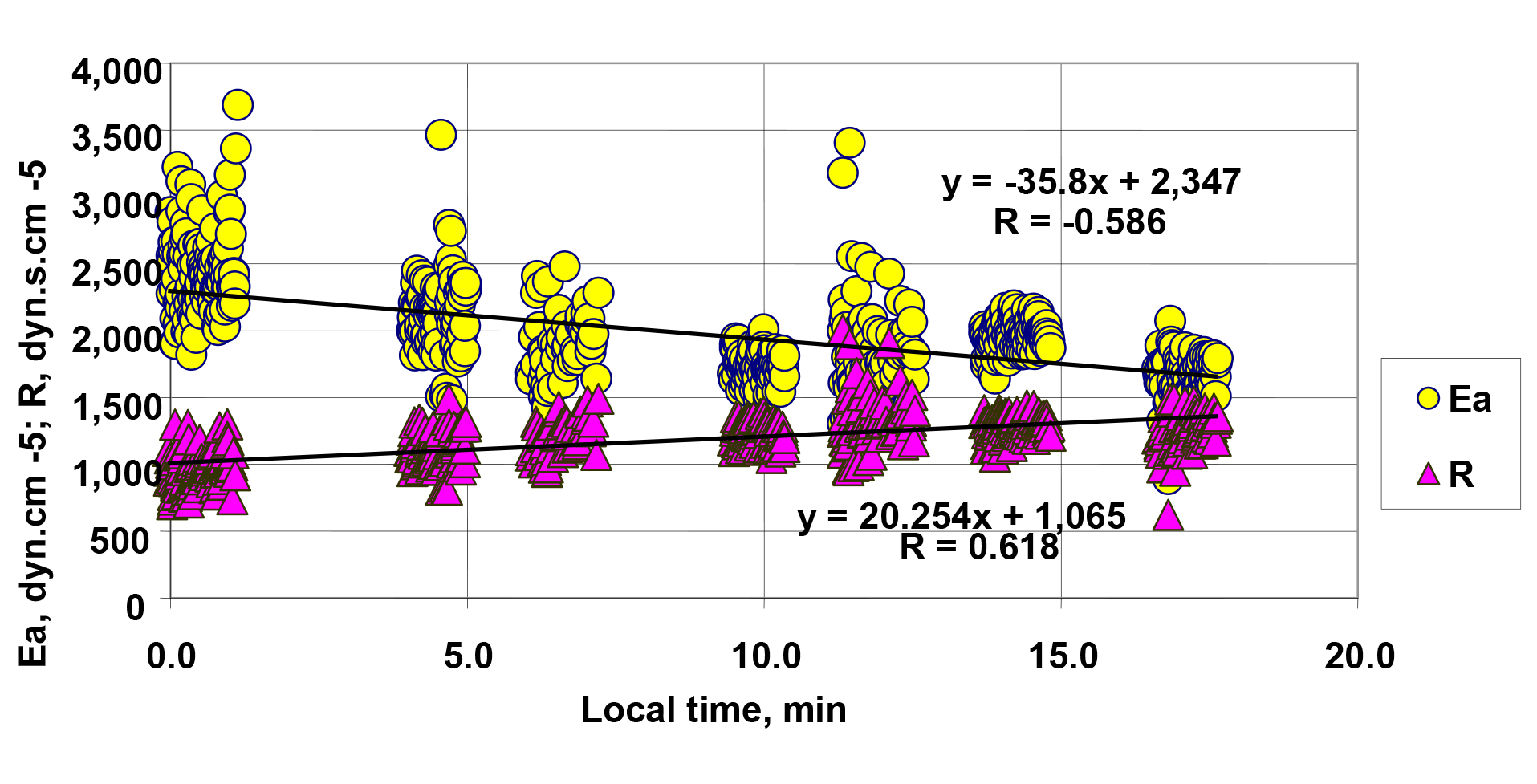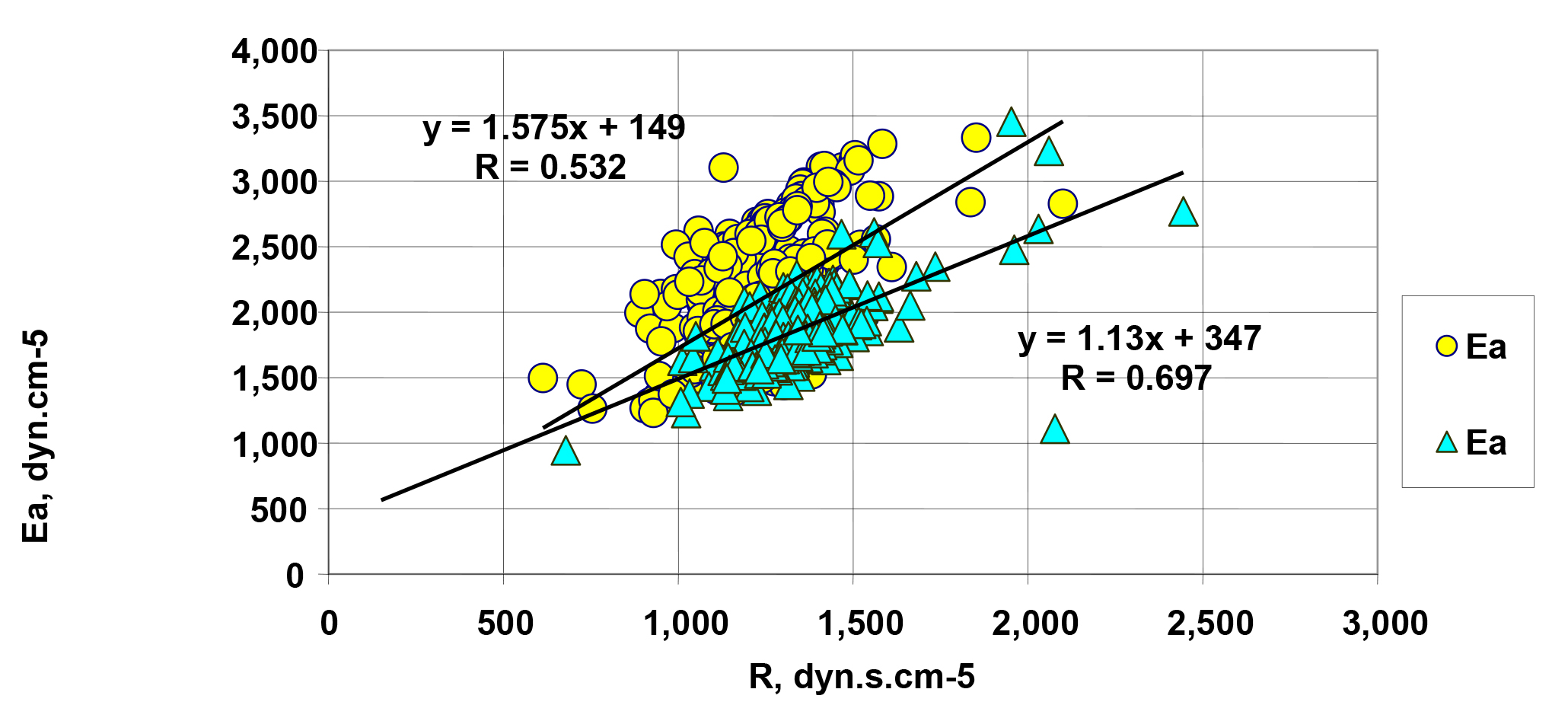Fractional breathing impact on haemodynamic effects of archers in recovery period
Фотографии:
ˑ:
Dr.Biol., Professor R.V. Tambovtseva1
PhD, Associate Professor V.R. Orel1
1Russian State University of Physical Education, Sport, Youth and Tourism (GTSOLIFK), Moscow
Keywords: respiration, central haemodynamics, vascular loads on heart, arterial pressure, archers, elastic and peripheral resistances, stroke volume.
Introduction. At present, there is quite a pressing issue of using new non-invasive means and methods in a training process that could considerably expand the body’s adaptive capability and stimulate responses to different types of training loads. Respiratory function is unique in being very “convenient” in terms of management. Its function can be regarded as purely visceral, safeguarding homeostasis, as well as somatic, its operation ensured by the contractile function of the respiratory muscles. Regulation of the respiratory muscle work is carried out both automatically and by spontaneous cortical effects [1, 8]. Therefore, it is possible to a certain extent to impose spontaneous corrections onto the automatic respiratory rhythm, which allows to control the pulmonary ventilation level at discretion and thus impact the internal environment parameters, creating optimal conditions for adaptation development and control the condition of the central nervous system and circulation. Complex studies of central haemodynamics and vascular load on heart in athletes of various specializations have been conducted for many years [2-5]. Objective laws of changes in athletes’ central haemodynamics are essential for proper understanding and describing blood pressure (BP) and heart rate (HR) values formation which are the main non-invasively measured parameters of the circulatory system. BP and HR values serve as indicators of the functional fitness of an athlete for muscle loads fulfillment. At the same time the athlete’s cardiovascular system [3, 4] is the main factor limiting the body’s functionality that ensures performance of the proper amount of muscle work by an athlete [5, 9, 10].
Objective of the research was to identify the impact of fractional breathing proposed by A.A. Streltsov [6, 7] as a new ergogenic tool on haemodynamic characteristics of archers during recovery period.
Research methods and structure. The experiment was carried out at the premises of the laboratory of physical working capacity of the Institute for Sports Research. The work was done without risk to human health, in compliance with all the humanity and ethical principles (WMA Declaration of Helsinki, 2000, EU Directive 86/609). The subjects – 19 elite archers – gave their written consent to participate in the experiment. At the time of the examination they were healthy, and the doctor allowed them to participate in the experiment divided into two stages. During the first stage the athletes worked out on a cycle ergometer for 2 minutes (cadence 75 rpm) without using breathing exercises. During the second stage the subjects breathed by the method proposed by A.A. Streltsov for 2 minutes before and after the experiment; the breathing method is based on the alternation of four short and intense parts of inhalation and one strong short exhalation (application filing date - 21.03.1998, patent application date - 30.03.2003 [6, 7]). The measurements were made immediately after pedaling on the cycle ergometer. Central haemodynamics indicators were measured using REODIN, a software-based measuring complex (Research and Development Center Medass, Moscow), based on the method of impedance plethysmography [2, 4]. The following values were recorded: heart rate (HR), stroke volume (SV), minute volume (MV), ejection time (S), isovolumic contraction time (IC), blood pressure (systolic – BPs and diastolic – BPd). Calculations of arterial impedance (Za), its components (Zp, Zk), peripheral (R), elastic (Еа) and inertial (Js) resistance of the arterial system as well as left ventricle contractility parameters: effective elasticity of the left ventricle (Es), contraction power of the left ventricle (Ws) and specific contraction power of the left ventricle (Wud) were made using a specific program in VBA Excel. The calculations of these indicators are based on a mathematical model involving the theory of aortic compression camera (ACC) by O. Frank.
The study results were statistically processed using Statistica 6.0 software and built-in analysis functionality of Microsoft Excel (2007).
Results and discussion. The figure shows data on HR changes depending on the elastic resistance (Еа) in archers in the recovery period without using fractional breathing (circles) and when using it (triangles). It is shown that HR values in the recovery period without the use of fractional breathing are located mainly below the HR values when using it. The results of joint HR and Ea location in the recovery period without using fractional breathing are statistically significantly described by the following regression equation: HR = 0.011 ∙ Еа + 66. The corresponding regression equation for recovery using fractional breathing is as follows: HR = 0.0147 х Еа + 67. The analysis of HR changes depending on the local time after exercise showed a pronounced reduction of this parameter from 130 to 110 beats/minute. By the 6th minute HR goes down to 95 beats/min. Further HR decrease continues in accordance with the following regression equation: HR = -1.39 ∙ t + 112.5. Mean HR values in the recovery period while using fractional breathing are significantly lower than HR parameters without its use. Figure 2 presents data on elastic resistance (Еа) changes depending on the local time after exercise on the cycle ergometer. It is shown that at the beginning of pedaling Еа values are about 1,000 dyn.cm-5. During 2 minutes of exercise elastic resistance values range from 1,000 to 3,000 dyn.cm-5. By the 5th minute the maximum Ea values reach 3,500 dyn.cm-5, by the 6th minute Ea has high values without the “muscle-pump” effect, since the pedaling stopped. These elastic resistance parameters are statistically significantly (р<0.001) described by the following regression equation: Еа = -276 ∙ t + 1,286. At t > 6 min elastic resistance reaches values of about 4,000 dyn.cm-5 and is statistically significantly described by the following regression equation: Еа = -336 ∙ t + 4,833. At t from 9 to 20 minutes Еа is on average described by the following regression equation: Еа = 103 ∙ t + 3,566. During the analysis of the peripheral resistance data dependence on the local time after exercising on the cycle ergometer it was shown that at the start of pedaling R values are about 700 dyn.s.cm-5. Within 2 minutes of pedaling peripheral resistance increases and ranges on average from 700 to 2,000 dyn.s.cm, by the 5th minute it decreases and R minimum values reach 500 dyn.s.cm-5. This happens without the “muscle-pump” effect, since the pedaling stopped. During the recovery period the average peripheral resistance increases and the regression equation describing the dependence of peripheral resistance (R) on the local time (t) looks as follows: R = 15.9 ∙ t + 940.
Figure 3 shows changes in elastic and peripheral resistances depending on the local time. The measurements were made immediately after exercising. Elastic resistance at the beginning of the procedure reaches the values of about 4,000 dyn.s.cm-5 even without performing muscle work on the cycle ergometer, same as in the case of recovery without using fractional breathing. During the entire local time interval elastic resistance goes down on average in accordance with the following regression equation: Еа = -36.8 ∙ t + 2,347, and peripheral resistance monotonically increases on average in accordance with the statistically significant (р<0.01) regression equation: R = 20.254 ∙ t + 1,065.
When using fractional breathing during the recovery period for 2 minutes, stroke volume varied from 50 to 115 ml. By the 5th minute of local time stroke volume changes ranged from 50 to 140 ml. With further local time increase stroke volume changes are mainly within the range of 30 to 80 ml. Appropriate regression equation statistically significantly describes the average decrease in stroke volume with increasing local time: SV = -1.304 ∙ t + 83. Analysis of the minute volume values showed that MV varied from 7 to 13 l/min. During the 5th minute of local time minute volume changes ranged from 6 to 11 l/min, with further local time increase its changes occur mainly in the range of 4 to 8 l/min. Appropriate regression equation statistically significantly describes the average decrease in MV with increasing local time: MV = -1.234 ∙ t + 2.6. Figure 4 presents data on elastic resistance dynamics depending on peripheral resistance in the recovery period of archers after exercising on cycle ergometer (circles) and during the recovery afterwards using fractional breathing (triangles) after another two-minute pedaling session of the same intensity. Linear regression dependences have the following nature: Еа = 1.13 ∙ R + 347 – F = 1.13 with fractional breathing and Еа = 1.575 ∙ R + 149 – F without it, where F is an indicator of the athlete’s fatigue level calculated during his recovery after muscle work and determined by the slope ratio value in a linear regression dependence of the elastic resistance of the arterial system on the peripheral resistance. The bigger the F value, the greater the athlete’s fatigue. The correlation coefficients for both regression lines are not less than 0.532, which with the number of measurements being (n > 150) indicates a high statistical significance (р < 0.001) of these regression interconnections. Hence, the athletes’ fatigue level indicator (F) during recovery using fractional breathing was lower than in case of recovery without it. Fractional breathing usage when recovering after graded muscle work allowed significant reduction of fatigue in athletes during the same period of time.
Conclusions:
- Streltsov's fractional breathing method used in the training process of archers has a positive impact on the recovery processes in their circulation system.
- During the recovery period after the same amount of muscular work the use of the fractional breathing method significantly lowers systolic blood pressure.
- The use of the fractional breathing method significantly reduces elastic resistance of the arterial system, the values of stroke volume, cardiac output and fatigue level.

Figure 1. HR dependence on elastic resistance
Abscissa – elastic resistance (Еа), dyn.cm-5
Ordinate – HR, bpm

Figure 2. Elastic resistance dependence on local time when pedaling and recovering
Abscissa – local time, minutes
Ordinate – elastic resistance (Ea), dyn.cm-5

Figure 3. Elastic and peripheral resistances dependence on local time after 2 minutes of exercise using fractional breathing
Abscissa – local time, minutes
Ordinate – elastic resistance (Ea), dyn.cm-5 and peripheral (R), dyn.s.cm-5

Figure 4. Elastic resistance dependence on peripheral resistance during recovery without fractional breathing (circles) and with fractional breathing (triangles)
Abscissa – peripheral resistance – (R), dyn.s.cm-5
Ordinate – elastic resistance (Еа), dyn.cm -5
References
- Breslav I.S., Volkov N.I., Tambovtseva R.V. Dykhanie i myshechnaya aktivnost cheloveka v sporte [Breathing and muscular activity in sport]. Moscow: Sovetskiy sport publ., 2013, 334 p.
- Sidorenko, G.I. Impedanskaya pletizmografiya (reografiya) [Impedance plethysmography (rheography)]. Instrumentalnye metody issledovaniya v kardiologii [Instrumental methods of research in cardiology]. Minsk, 1994, pp. 81-90.
- Karpman V.L., Lyubina B.G. Dinamika krovoobrashcheniya u sportsmenov [Blood circulation dynamics in athletes]. Moscow: Fizkultura i sport publ., 1982, 135 p.
- Orel V.R. Adaptivnye effekty vzaimodeystviya serdtsa i sosudov u sportsmenov. Sportsmen v mezhdistsiplinarnom issledovanii [Adaptive effects of heart and blood vessels interaction in athletes. Athlete in interdisciplinary study]. Moscow: TVT Divizion publ., 2009, pp. 210-258.
- Orel V.R., Voytenko L.Y., Kachalov A.A. Sosudistye reaktsii i effekty utomleniya sportsmena pri ekstremalnykh testiruyushchikh nagruzkakh [Vascular reactions and effects of fatigue in athletes under extreme testing loads]. Mater. Vseros. nauch.-prakt. konf. "Bezopasnost v ekstremalnykh situatsiyakh: mediko-biologicheskie, psikhologo-pedagogicheskie i sotsialnye aspekty" [Proc. res.-pract. conf. "Safety in extreme situations: biomedical, psycho-pedagogical and social aspects"], 2015. Moscow: RSUPCSYT publ., pp. 89-92.
- Streltsov A.A. Chetyre-odin [Four-one]. Fizkultura i sport, 1996, no. 4, pp. 10-11.
- Streltsov A.A. Sposob iskusstvennogo obogascheniya organizma cheloveka kislorodom [Method of artificial oxygenation of human body]. Patent RF # 2355371, applied 15.08.2007, patent date 20.05.2009.
- Tambovtseva R.V. Dinamika biokhimicheskikh protsessov v period vosstanovleniya posle myshechnoy raboty [Dynamics of biochemical processes in post-muscular work recovery period]. Vseros. nauch. konf.: «Voprosy funktsionalnoy podgotovki v sporte vysshikh dostizheniy» [Proc. scie. conf.: "Problems of functional training in elite sports"]. Omsk, 2013, pp. 124-130.
- Chantler P.D., Lakatta E.G., Najjar S.S. Arterial-ventricular coupling: mechanistic insights into cardiovascular performance at rest and during exercise. J Appl Physiol., vol.105, 2008, pp.1342–1351.
- Chirinos J., Rietzschel E. R., Shiva-Kumar P. et. al. Effective Arterial Elastance Is Insensitive to Pulsatile Arterial Load. Hypertension, 2014, vol. 64, pp.1022-1031.
Corresponding author: ritta7@mail.ru
Abstract
The study was designed to consider the effects of fractional breathing practices (new ergogenic method) on the competitive archers’ haemodynamics in the rehabilitation period. Subject to the tests were 19 elite athletes whose haemodynamics characteristics were tested using RHEODIN Impedance Plethysmograph System. The test data demonstrated practical benefits of the fractional respiration practices for the archers’ rehabilitation processes, particularly for the blood circulation system. The method was found to significantly decrease systolic pressure rates; arterial system elastic resistance rates; stroke volume; blood flow rate per minute; and fatigue rate.




